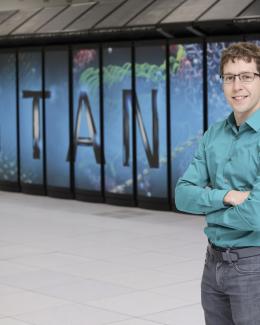Abstract
Celeritas [1] is a new Monte Carlo (MC) detector simulation code designed for computationally intensive applications (specifically, High Lumi- nosity Large Hadron Collider (HL-LHC) simulation) on high-performance heterogeneous architectures. In the past two years Celeritas has advanced from prototyping a GPU-based single physics model in infinite medium to implementing a full set of electromagnetic (EM) physics processes in complex geometries. The current release of Celeritas, version 0.3, has incorporated full device-based navigation, an event loop in the presence of magnetic fields, and detector hit scoring. New functionality incorporates a scheduler to offload electromagnetic physics to the GPU within a Geant4-driven simulation, enabling integration of Celeritas into high energy physics (HEP) experimental frameworks such as CMSSW. On the Summit supercomputer, Celeritas performs EM physics between 6 and 32 faster using the machine’s Nvidia GPUs compared to using only CPUs. When running a multithreaded Geant4 ATLAS test beam application with full hadronic physics, using Celeritas to accelerate the EM physics results in an overall simulation speedup of 1.8–2.3× on GPU and 1.2× on CPU.





